Four Ways to Play
- Campaign: Choose the Rebellion or the Empire and play through a series of story-based missions that bring you to the events of the first Star Wars movie, also known as “A New Hope.” Control the Alliance and you’ll eventually get to attack the Death Star. Select the Imperials and you’ll get the chance to crush Rebel scum once and for all.
- Galactic Conquest: These maps, which contain fewer planets than the full campaign map, present you with specific objectives, such as killing one of the other side’s leaders or building and using — or finding and destroying — the Death Star. They’re designed for shorter game sessions.
- Skirmish: Enter this mode if you want a quick land- or space-based battle. Your goal is to destroy the other side’s base. Along the way, you can capture research nodes and buy technology upgrades that give you access to better ships.
- Multiplayer: Online battles can be of the Galactic Conquest or Skirmish variety, with the former including two players and the latter involving up to eight combatants.
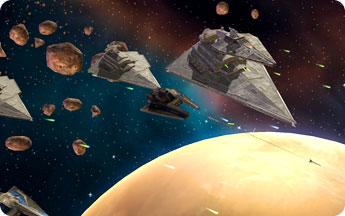
Impressive. Most Impressive. A group of Imperial Star Destroyers.
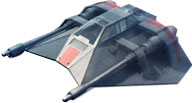
- The Rebellion: The Alliance makes up for their disadvantaged starting position with a variety of guerilla-style tactics, including the ability to steal technology upgrades from the Empire and the use of smugglers to siphon credits from planets they don’t control. They can also form raiding parties out of small numbers of units and bypass a planet’s space-based defenses, whereas the Empire must always win the battle in orbit before progressing to the surface. “The Rebel faction is extremely dangerous when it employs hit-and-run attacks,” notes Fetterman.
- The Empire: The Imperial forces use bounty hunters to counteract the Rebellion’s smugglers, and they have the ability to research several technology upgrades simultaneously. They also amass credits quickly, enabling them to build overwhelming fleets that focus on strong vehicles, with the ability to continually launch new squadrons of TIE fighters and TIE bombers from their Star Destroyers. Once they obtain the Death Star, of course, they’ll have the ultimate power in the universe. It’s hard to argue with that when they can reduce your planets to asteroid fields, but the Rebels can exploit its weakness and destroy it.
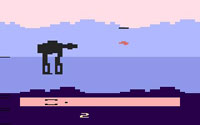
Star Wars’ subject matter made it a natural for the video game world, but the first such effort didn’t appear until 1982, when an adaptation of the Battle of Hoth, from “The Empire Strikes Back,” was released for the Atari 2600. It was a success, leading to Return of the Jedi: Death Star Battle and Jedi Arena, both also for the Atari 2600, the following year. All three were published by Parker Brothers, and they were the last Star Wars games released for home video game consoles until 1991, aside from ports of the Star Wars arcade game developed by Atari.
Star Wars the Arcade Game was released in 1983. It was originally called Warp Speed, until a deal between Lucasfilm and Atari turned it from an attack on a generic space fortress into a recreation of the assault on the original Death Star. It featured the first use of digitized voices from the movie, and its 3D vector graphics produced a clean look that set it apart from the blocky graphics found in video games of that era. In 1985, Atari produced a vector-based sequel based on the Battle of Hoth and the Millenium Falcon’s escape through the asteroid field, from “The Empire Strikes Back.”
While the home video game business went through a severe downturn in the mid-to-late 1980s, Star Wars fans could still get their fix at arcades. In 1984, Atari went back to traditional 2D graphics with an arcade game based on “Return of the Jedi.” It reenacted the speeder bike chase, the Millenium Falcon’s attack on the second Death Star, and the ground battle on Endor.
The Games Come Full Circle
During the downtime until Star Wars’ resurgence in the mid-1990s, the franchise returned to home consoles with the release of a game based on the first movie for Nintendo’s NES, which had jumpstarted renewed interest in video games. That side-scrolling action game saw a sequel based on “The Empire Strikes Back “in 1992, followed soon after by enhanced versions for the Super Nintendo that also included an adaptation of “Return of the Jedi.” For the first time, players could make their way through the events depicted in the movies. They could also wield a lightsaber in ways that went beyond the restricted movements found in 1983’s Jedi Arena for the Atari 2600.
With the video game industry back for good and Star Wars’ continued popularity evidenced by strong sales of the new games, the franchise rapidly expanded. While LucasArts had produced a variety of videogames since its founding in 1982, it ironically did not publish a Star Wars game until 1993, when X-Wing was released for the DOS and Macintosh platforms. It marked a return to that venerable starfighter’s cockpit, which players hadn’t seen from a first-person perspective since the original Star Wars arcade game. X-Wing featured a variety of missions, from dogfights to convoy escorts, that culminated in the attack on the first Death Star.
A pair of X-Wing expansion packs soon followed, as did a sequel, TIE Fighter, that let players experience space combat from the Imperial point of view. The games were popular, but they also featured more complex gameplay aimed at players who enjoyed flight simulators. For those who simply wanted to fly around and blow stuff up, LucasArts also released Rebel Assault in 1993, for Windows, Mac, and two video game consoles. It was the company’s first CD-ROM-only title, and it was one of the earliest games to use a lot of full-motion video, which increased the graphical quality but didn’t allow players freeform exploration of its levels.
Expanding the Line-Up
LucasArts also broke new ground in 1995 with the release of Dark Forces, which marked the debut of first-person shooters in the Star Wars universe. It also introduced fan favorite Kyle Katarn, a former Imperial agent who started working for the Rebellion when he was hired to steal the plans for the original Death Star. In the sequel, 1997’s Jedi Knight: Dark Forces II, Katarn began to learn the ways of the Force, giving players the chance to not only wield a lightsaber but also use Force powers against enemies. The latter was another first for a Star Wars game.
Katarn’s ongoing storyline gave LucasArts the opportunity to fully explore the Expanded Universe, including the introduction of robotic elite Imperial stormtroopers known as Dark Troopers. In the next game, Mysteries of the Sith, Katarn teamed up with Mara Jade, a former Imperial assassin who joined the Alliance after the Battle of Endor and who was introduced in Timothy Zahn’s best-selling series of novels published from 1992 to 1994.
The series returned to the Macintosh for Jedi Knight II: Jedi Outcast in 2002 and Jedi Knight: Jedi Academy in 2003. Although the player doesn’t control Katarn in Jedi Academy, the character does show up during the story. Aside from his appearance in Empire at War, Katarn’s ongoing adventures have been relegated to Star Wars comic books and novels.
The Force Will Be With Us Always
LucasArts finally brought Star Wars into the strategy genre with Rebellion (1998) and Force Commander (2000), neither of which was well-received by fans. The developer finally perfected the idea, however, with the release of Galactic Battlegrounds in 2002, followed soon after by a Clone Campaigns expansion pack featuring factions from the movie “Attack of the Clones.”
The late 1990s and early 2000s offered an explosion of Star Wars games for Macintosh, Windows, and every video game console, thanks to the release of the three prequel movies, which spurred renewed interest in the saga. Star Wars entered the role-playing genre with Knights of the Old Republic, which uses the Advanced Dungeons & Dragons 3rd edition rules for RPG action set 4,000 years before the original trilogy. Meanwhile, Star Wars: Battlefront gave players Battlefield 1942-style gameplay, and LEGO Star Wars and LEGO Star Wars II took the franchise into the realm of those brightly-colored building blocks for adventures that could be enjoyed by adults and children.
Star Wars: The Force Unleashed delves into the period between “A New Hope” and “Revenge of the Sith.” It drops you into the boots of Starkiller, a secret apprentice groomed by Darth Vader as a hedge against the Emperor attempting to eliminate him. The game features over-the-top Force powers that let you pull starships out of the sky, charge your lightsaber with Force lightning, and more.
The “Star Wars: Clone Wars” series on Cartoon Network has begun to expand the timeline between “Attack of the Clones” and “Revenge of the Sith,” while a forthcoming live-action series will bridge the two movie trilogies.
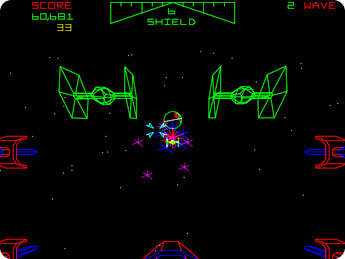
Star Wars the Arcade Game. Our first chance to destroy the Death Star, back in 1983.
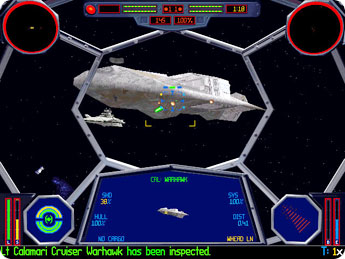
TIE Fighter. The sequel to the first flight sim in the Star Wars galaxy.
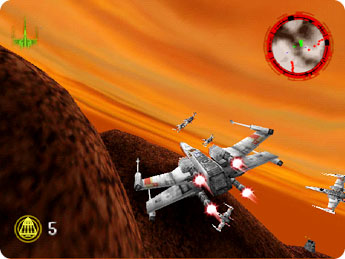
Rogue Squadron. This Nintendo 64 game took us to the surface of many well-known planets, including Tatooine and Bespin.
- Mac OS X version 10.5
- 1.8GHz Intel processor
- 512MB of RAM
- Video Card: NVIDIA: GeForce 7300, 7600, 7800, 8600, 8800, 9400, 9600, GT 120, Quadro FX 4500; ATI Radeon: X1600, X1900, HD 2400, HD 2600, HD 3870, HD 4670, HD 4850
- 9GB hard disk space
- DVD-ROM drive
- Broadband Internet connection for Internet play; LAN (TCP/IP) connection for LAN play
